Welcome to the Philippines: Armas ng mga Ninuno
I wanted to share more things about the Philippines but sometimes I can’t think of any topic to write. So sometimes, I just wrote something about crypto, personal experience and other stuffs. Gladly tonight, as I was talking to my father, I heard my brother talking at the background that he is doing a homework which is about the past wars that happened in the Philippines. So I got an idea to wrote something about the Philippines. So here it is.
With the modernizations of weaponry now that even a small missile can create a huge disaster to an area, so what if that happened in the past? Terrifying right? But think if wars today is just like before, people holding some ancient swords. What will you feel? Yes, war isn’t good whatever weapons they are holding - knife, gun, cannons. Okay. Enough with the wars, I just want to write something about the weapons our ancestors wield to fight off foreign invaders. So here are some list I got.

It is a type of single edged longsword traditionally used by various ethnic groups in the Philippine Archipelago. It has a distinct profile with the tapered blade being much broader and thinner at the point than at its base sometimes with a protruding spikelet along the flat side of the tip. Kampilan is the term most commonly used for the sword in the Tagalog, Ilocano and Visayan languages. It simply means sword. Unlike other common pre-colonial Filipino bolo weapons which were based on agricultural implements, the kampilan is specifically made for warfare used either in small skirmishes or large-scale encounters. According to Philippine historical documents, the kampilan was widely used by chieftains and warriors for battle and as a headhunting sword.
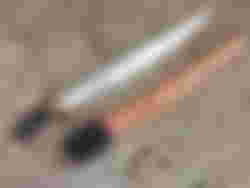
The Philippine Katipunan era bolo is commonly referred to as Luzon Mutulis. The bolo has laminated blade, the hilt handle is made of carabao horn, handle with copper guard and brass ferrule, the butt cap is brass with copper and brass buck plates. This type of bolo is similar to the one supposedly carried by Andres Bonifacio as for photo of a similar bolo appearing in the books of the Filipino historian and Ambeth Ocampo

Also known as wing dagger is a Filipino dagger used throughout the pre-colonial Philippines. It is unusually shaped with a leaf like blade and a finger fitting grip consisting of two horn like projections at the pommel in no guards the tang also protrudes at the back. The dagger is a status symbol among nobility and warriors and is usually finally worked with precious metals, ivory and horn.
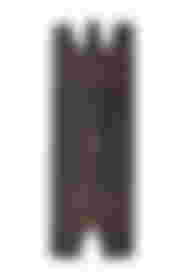
It is a large rectangular myth motif shield used by the natives in the Philippines. The shield is made of hardwood and is decorated with elaborate carvings. The shield measured about 1.5 metres in length. Its base is composed of rattan wood which is strengthened by the application of resin. It was widely used throughout the Philippines for warfare.
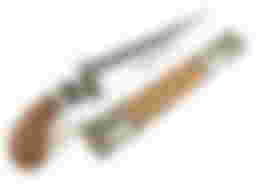
It is a knife from Mindanao and the Visayas islands of the Philippines. It is essentially a diminutive form of the larger Calais or Chris. The gunong serves both as a utility knife and as a thrusting weapon used for close-quarter fighting usually as the last defense. It is most often associated with the Maranaw among whom the gunong was traditionally carried by both sexes. Although it exists in other cultures throughout mindanao, in the Visayas, the weapon has generally tucked into the back of a waist sash. The guning is one of many bladed weapons portrayed in the weapons of moral and plaque that has become a common souvenir item and pop-culture icon in the Philippines.
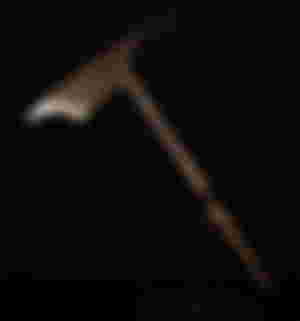
It was once used as a standard battle weapon for killing their enemies. The igorot head hunting axe comes in many different designs each one is a beautiful work of art and at the same time it is a very deadly weapon. This is due to the fact that the igorots in reality are very good craftsmen and artists. Their weapons are works of art as well as a functional tool.

A single edged sword from the Philippines specifically the Southern Tagalog provinces of Batangas and Mindoro. The swords name could either be a reference to the similarity of its shape to the leaves of rice or to local green snakes “dahing palay” reported to be extremely venomous. The snake is probably green specimens of the Philippine pit viper. Dahong palay was originally used as a farmer's tool for clearing thick grass growths however during the Philippine revolution farmers from Batangas soon came to favor it for its slashing and thrusting field. The blade is single-edged and has what is classified as a normal blade pattern that is it has a curved cutting edge and a back which is virtually flat at the tip. The width of the blade is at its fullest at the hand guard and from there the sharp edge tapers smoothly with only the slightest curve or belly as it moves towards the tip of the sword.
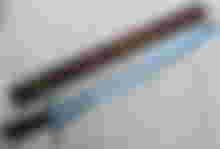
A type of double-edged Filipino sword often with a wavy section. The kalos double-edged blade can be used for both cutting and thrusting, the wavy portion of the kalis is said to be meant to facilitate easier slashing in battle since a straightedge tends to get stuck in the opponent's bones. The wavy portion allows the kalis bearer to more easily pull the weapon out of his opponents body. All the Filipino types of kalis swords are both larger and heavier than those from Indonesia. Although it is considered to be a slashing weapon, the kalis can be effectively used for thrusts and stabs.

A type of philippine bolo sword or knife characterized by a heavy blade in a wide tip. It is the traditional weapon favored by the people of Basilan Island. It usually features a cockatoo on a cockatoo hill which among is distinctively elongated to function as armed support. Like other bolos, pirah were commonly used as farm implements in addition to being used in combat.
There are lot more to add on this list of the weapons used by our ancestors. I hope you learned something again from this article. Till nextime of Welcome to the Phillipines!
Image source






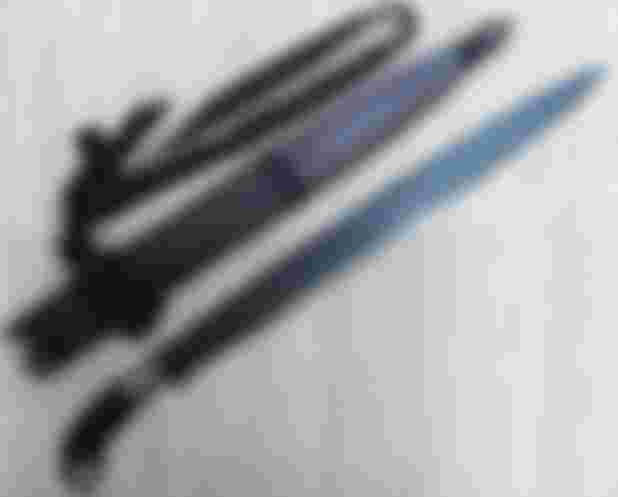
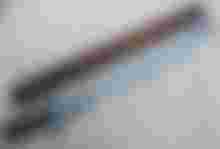

I am most familliar with dahong palay sometimes called machete if I'm not mistaken? I just saw papa before using that kind of sword